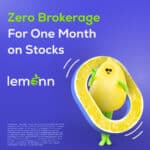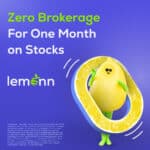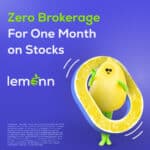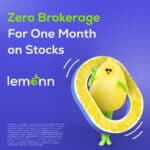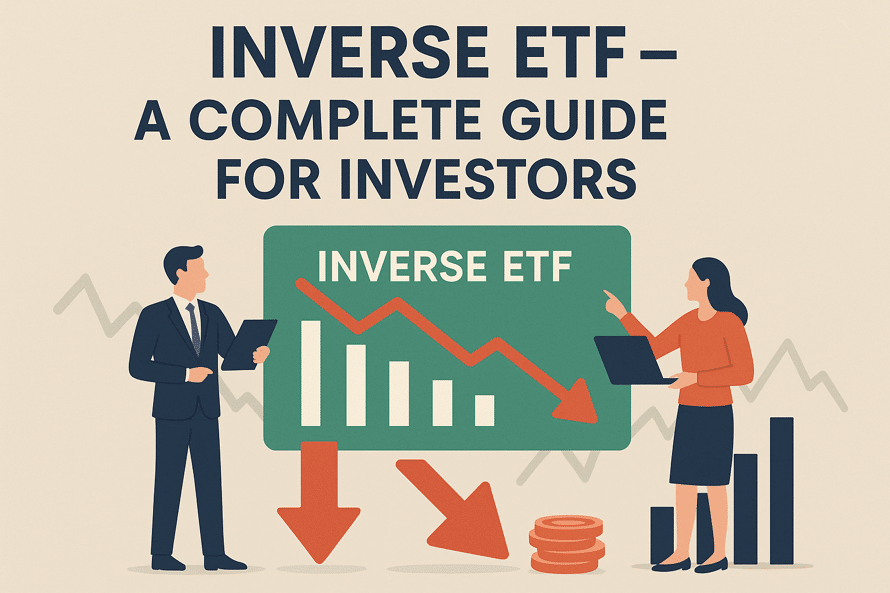
When the market is unstable, investors constantly seek ways to safeguard their investments and grow their wealth. Inverse ETFs are a unique way to make money when markets go down, while regular trades make money when markets go up.
Inverse ETFs are beneficial because they can turn market downturns into potential profits. If you know how to utilize these financial instruments, you can save money and make money while the markets are going down. Let’s take a closer look at inverse ETFs.
What is an Inverse ETF?
Inverse ETFs are exchange-traded funds that use various derivatives to profit from a decline in the value of an underlying benchmark. They primarily invest in daily futures contracts, which are agreements to buy or sell assets at predetermined prices in the future.
Why Do Investors Use Inverse ETFs?
Investors use inverse ETFs to generate profits when markets are falling or to hedge against long-term investments. Such funds use futures and other swaps to generate profits.
How Inverse ETFs Work
An inverse ETF is designed to move in the opposite direction of a particular market index. Individuals usually use them to short or hedge in the short run. You must understand how they function and how their leveraged forms function to make effective use of them.
The Mechanism behind Inverse ETFs
Inverse ETFs utilize futures contracts and other financial instruments to generate returns that move in the opposite direction of a regular index. These funds enable investors to earn money when the market declines, rather than shorting directly.
Daily Rebalancing and Its Impact
To maintain their opposite exposure, these ETFs adjust their positions at the end of every trading day. Over time, this daily change has effects that get stronger. It can lead to unexpected results in volatile markets, so they’re best suited for busy players.
Leveraged Inverse ETFs Explained
Leveraged inverse ETFs use advanced techniques and options to boost the opposite performance. They can make wins or losses look much bigger. However, because they are rebalanced daily and have a high volatility effect, these products often don’t work as intended over time.
Advantages of Inverse ETFs
Short-term buyers or hedgers can benefit from inverse ETFs from a strategy point of view. This makes it easier to use bearish market tactics. Here are some advantages of inverse ETFs:
Hedging a Portfolio against Market Downturns
Inverse ETFs protect you by declining in value when the market declines. Investors use them to protect against possible losses in long bets during times of market volatility. They are easier to use and cost less than futures or put options. When prices drop, they help keep portfolios stable.
Profiting from Market Declines
Investors who believe the market will decline can generate profits from inverse ETFs when the main averages fall. To generate income, these funds employ short bets and swaps. They allow negative short-term plans to operate without the need for credit accounts.
Easy Access through Stock Exchanges
People can buy and sell inverse ETFs on public stock exchanges just like they do with regular ETFs. During market hours, investors can buy or sell them using regular trading accounts. This makes bearish exposure more accessible for small investors.
Risks and Limitations of Inverse ETFs
Short-term exposure is available through inverse ETFs, but they come with significant risks. Investors need to be aware of tracking errors, volatility decline, compounded effects, and compliance rules. Due to these issues, they are only suitable for skilled players.
Compounding and Tracking Errors
Every day, inverse ETF rebalances can result in larger differences over time. The fund’s performance can deviate from the expected standard as profits accumulate. High costs and delays associated with derivatives exacerbate the tracking error.
Volatility Decay in Long-Term Holdings
If you hold opposite ETFs for more than one trading period, the volatility may decrease, and your profits may worsen because the markets are volatile and reset every day. They aren’t suitable for long-term investments because they require frequent rebalancing.
Regulatory Considerations
Short-selling and swaps are used in inverse ETF, which means buyers are exposed to risks related to counterparties, credit, and liquidity. Regulatory groups warn people about the dangers of using excessive power and complexity before investing, advising them to read prospectuses and understand balance requirements.
Popular Inverse ETFs in India and Global Markets
Indian regulators do not yet permit inverse ETFs, but several well-known options are available in foreign markets.
Examples of Inverse ETFs in India
Due to rules set by SEBI, there are currently no inverse ETFs available in India. Indian investors can still invest in these in other countries.
International Inverse ETFs
The daily returns on ProShares Short S&P500 are the opposite of the daily returns on the S&P 500. They provide easy access without allowing you to short-sell. These products are intended for short-term use.
Inverse ETFs vs. Short Selling – What’s the Difference?
Both enable buyers to generate profits when markets decline; however, they are more challenging to access, carry higher risks, and incur additional costs. Short selling requires a credit account and can lead to potentially unlimited losses, whereas inverse ETFs offer a way to gain exposure with limited risk.
Ease of Access
You can buy inverse ETFs through any trading account, just like regular stocks. You don’t need credit approval or stock loans to do so. Short selling requires a trading account, the ability to identify stocks, and fees for borrowing money.
Risk Profiles
With inverse ETFs, the most you can lose is the amount you invested. This limits the risk of losing money. When you short-sell, on the other hand, you could lose all your money if prices rise significantly. Inverse ETFs also reset every day, which reduces the risk of losses accumulating over time.
Cost and Margin Requirements
The cost rates for inverse ETFs are usually less than 2%, and they don’t need any leverage funding. Inverse ETFs are more cost-effective and easier to use for many investors because they eliminate the need to pay for stock loan fees or margin calls.
Who Should Invest in Inverse ETFs?
Inverse ETF is suitable for investors who anticipate a short-term market decline but prefer not to employ complex trading strategies. However, they are ideal for individuals who are willing to take on a significant amount of risk and can actively monitor their investments.
Suitability for Retail Investors
You can invest in inverse ETFs through regular trading accounts, but they require daily attention. Individual buyers who need to hedge may gain. An individual investor’s appropriateness depends on their risk tolerance, financial goals, and ability to monitor their stock investments.
Suitability for Traders and Institutions
Traders and companies frequently utilize inverse ETFs to hedge, speculate, or manage their portfolios. They are superior to standard compounds because they are transparent and flexible. However, financial advice suggests that these tools should only be used for short-term plans.
Conclusion
You may be able to make money when the market goes down with an inverse ETF, but you need to consider them carefully. If you want to trade them quickly, they are better than long-term assets. To be successful, you need to be aware of their daily adjustments, higher costs, and time requirements. India doesn’t have them yet, but buyers can get ready for possible future possibilities by learning how they work.
FAQs
1. What is the meaning of inverse ETF?
Inverse ETFs are exchange-traded funds that use various derivatives to profit from a decline in the value of an underlying benchmark.
2. How do inverse ETFs make money?
Inverse ETFs generate profits when the index they track declines in value. They achieve this by utilizing financial tools known as derivatives, such as futures contracts, to generate profits when the market declines, which essentially involves trading.
3. Can I hold Inverse ETFs for the long term?
Individuals who wish to hold inverse ETFs for more than one day must closely monitor them and adjust their positions frequently to ensure optimal performance. If not managed well, compounding can alter returns, especially in unstable markets.
4. What are the risks of investing in Inverse ETFs?
Inverse ETF is designed to generate profits when the market declines. However, they come with significant risks. Compounding can erode returns over time, especially in volatile markets.
5. What are the best Inverse ETFs available in India?
An Inverse ETF is designed to generate profits when a specific index declines. Currently, SEBI rules do not permit the trading of inverse ETFs in India, which makes it challenging for investors to utilize these types of funds.
6. How do Inverse ETFs differ from leveraged ETFs?
Leveraged ETFs aim to increase the returns of a benchmark, while an inverse ETF seeks to have the opposite returns of an index. These ETFs aim to perform well every day, but over time, their actual results can differ significantly from what they promise.
7. Are inverse ETFs suitable for beginners?
Investing in inverse ETFs requires a good understanding of the market. Doing well mainly relies on getting the timing for starting and stopping just right.

